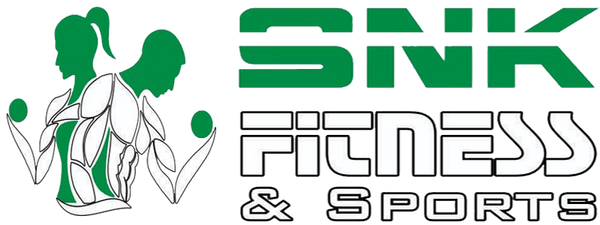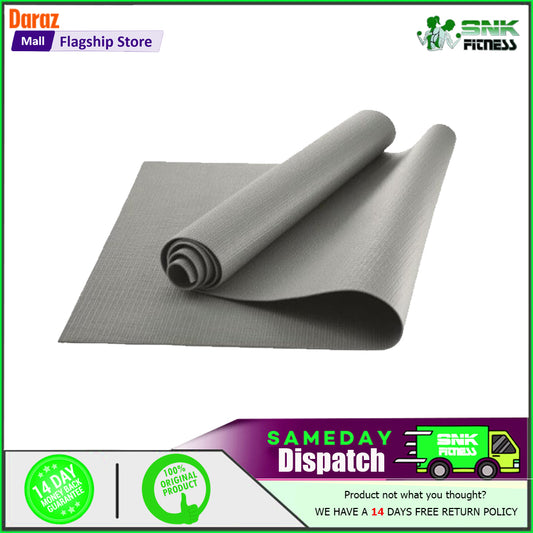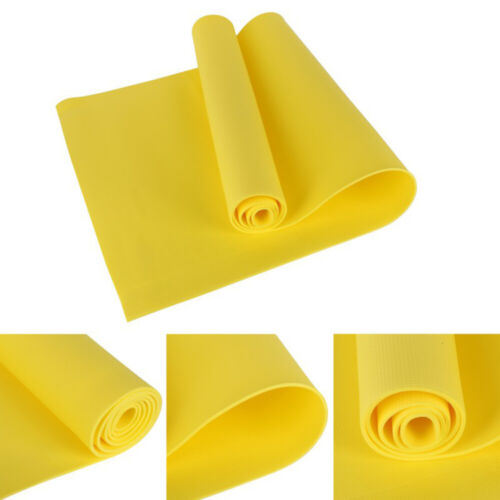-
Yoga Exercise Mat 4mm
Regular price Rs.1,199.00Regular priceUnit price / perRs.1,299.00Sale price Rs.1,199.00Sale
Collection: Yoga
Yoga accessories and equipment can significantly enhance your practice, whether you're a beginner or an experienced yogi. These tools help improve alignment, provide support, and increase comfort during your yoga sessions. Here’s a breakdown of essential and optional yoga accessories and equipment:
Essential Yoga Accessories & Equipment:
-
Yoga Mat:
- Thickness: Mats typically range from 1/16" to 1/4" thick. Thicker mats provide more cushioning, which is ideal for joint support, while thinner mats offer better stability.
- Material: Mats are made from various materials, including PVC (for durability and grip), TPE (eco-friendly), and natural rubber (biodegradable with excellent traction).
- Grip: A non-slip surface is crucial for maintaining stability during poses.
-
Yoga Blocks:
- Blocks are used to support and deepen stretches, help with balance, and ensure proper alignment. They are especially useful for beginners or those with limited flexibility.
- Materials: Typically made from foam (lightweight and soft), cork (eco-friendly and sturdy), or wood (durable and firm).
- Size: Standard blocks are about 9" x 6" x 4", but other sizes are available depending on your needs.
-
Yoga Strap:
- A strap helps increase flexibility by allowing you to reach farther and maintain poses for longer. It’s especially helpful for poses that require a good range of motion.
- Materials: Straps are usually made from cotton or nylon, with a buckle or loop to secure the strap at different lengths.
-
Yoga Bolster:
- Bolsters provide support in restorative poses, help with relaxation, and can be used to modify postures for comfort. They are often used in yin or restorative yoga practices.
- Shapes: Rectangular and cylindrical are the most common shapes.
- Filling: Typically filled with cotton, buckwheat hulls, or foam for varying levels of firmness.
-
Yoga Blanket:
- Used for added comfort and support in seated or lying poses, blankets can be folded to provide cushioning or to assist in certain stretches.
- Material: Usually made from cotton, wool, or a blend, these blankets are soft yet durable.
-
Yoga Mat Bag or Strap:
- A bag or strap makes it easy to carry your yoga mat to and from class while protecting it from dirt and wear.
- Bag: Offers more protection and often has extra pockets for personal items.
- Strap: Lightweight and simple, just wrap it around the mat for easy transport.
Optional Yoga Accessories & Equipment:
-
Yoga Wheel:
- A yoga wheel is used to open up the chest, shoulders, back, and hip flexors. It’s also useful for improving balance and flexibility in advanced poses.
- Material: Typically made of plastic, cork, or wood, with a cushioned outer layer for comfort.
-
Meditation Cushion (Zafu):
- A zafu is a round cushion used for seated meditation, providing support and comfort during longer sessions. It promotes better posture and helps keep the spine aligned.
- Filling: Common fillings include buckwheat hulls or cotton.
-
Yoga Towel:
- A yoga towel is placed on top of your mat to absorb sweat and provide extra grip, especially during hot yoga classes.
- Materials: Made from microfiber, these towels are quick-drying and lightweight.
-
Yoga Sandbags:
- Sandbags can be used to add weight to certain poses, helping deepen stretches and provide grounding in restorative practices.
- Weight: Typically 5-10 lbs.
-
Eye Pillow:
- An eye pillow provides gentle pressure and darkness during relaxation or Savasana (corpse pose). It can help promote deeper relaxation and is often filled with lavender for a calming effect.
-
Yoga Chair:
- A chair can be used for various seated or supported yoga poses, especially in Iyengar or restorative yoga. It helps practitioners with balance, stability, and alignment.
-
Yoga Mat Cleaner:
- To maintain hygiene and extend the life of your mat, a yoga mat cleaner helps remove sweat, dirt, and bacteria after each use.
- Formulation: Typically made with natural ingredients like essential oils and vinegar.
-
Yoga Socks and Gloves:
- These are designed with non-slip grips on the soles and palms, offering additional traction when a mat isn't available or when extra grip is needed.
-
Yoga Belt (Yoga Sling):
- A belt or sling can help with carrying your mat or can be used in practice similar to a strap for added support in certain poses.
-
Yoga Ball (Exercise Ball):
- Useful for balance exercises and strengthening core muscles, yoga balls are also used in certain yoga practices to deepen stretches and improve stability.
-
Incense or Essential Oils:
- While not necessary for physical practice, incense and essential oils can enhance the atmosphere during yoga or meditation sessions, promoting relaxation and focus.
Choosing the Right Equipment:
When selecting yoga accessories and equipment, consider the type of yoga you practice, your experience level, and any physical limitations or goals you have. Quality and comfort are key, so investing in good materials will ensure a better and more sustainable practice.


